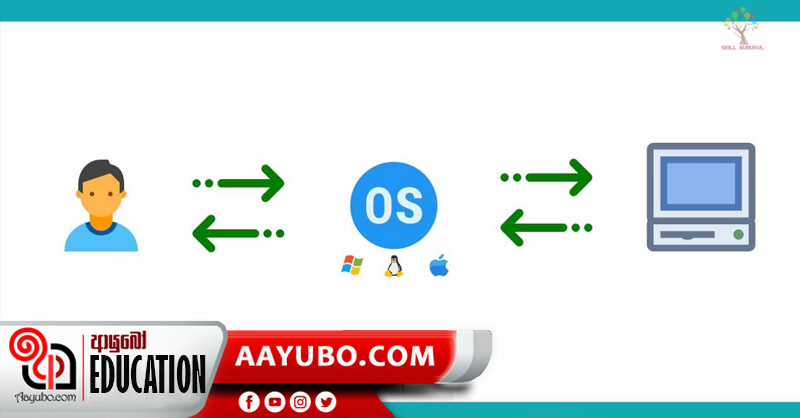Grade 6 ICT : Operating System and File Management: Part 1

We have already learnt that an operating system is a system software and it is a major requirement for the operation of a computer. It establishes the connection between the computer user and the hardware while managing other software in the computer. It manages hardware and software according to the given instructions or commands. It performs file management, process management, memory management, handles input and output while managing the peripheral devices.
Examples: Windows, Ubuntu, Apple iOS, Google’s Android O/S, Linux, Redhat O/S
What is a User Interface?
A user interface is a part of an operating system, a program or a device that helps the user to insert and receive information. This is provided to the user by the operating system in order to do his/her tasks. We can see the user interface on the screen when the computer is switched on. A user interface can be command driven or it can be a graphical user interface. Graphical user interfaces like Windows 10 have many interactive components like windows, icons, menus, and etc. The icons on the user interface can be used to open a file, a folder or a program. You can familiarize yourself with the components of the home screen of an operating system and identify them. For example, the desktop home screen with Windows 10 operating system will consist of icons, desktop, start menu, task bar and the quick launch bar.
File Management
File management is one of the most important functions of the operating system. A file can be defined as a collection of data and information. It acts as a storage unit in a computer that is identified by a filename. Files that are stored in a computer are illustrated with different symbols. For example a file with text may be shown in a symbol that differs from that of a file with video or images or voice.
A file has two major parts namely, file name and file extension. We can identify a file with the help of its file name whereas the file extension will show the application software to which the file belongs.
Example: john.docx – here, “john” is the file name and “docx” is the file extension. The file type can be cited as a text file that has been created using a word processing software; Microsoft Word.
by Mekhala Egodawele
Photo source : Internet
1675 Views







Comments